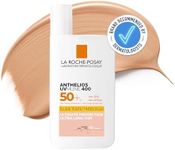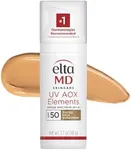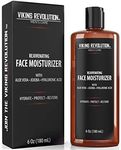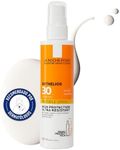Buying Guide for the Best sunscreens
Choosing the right sunscreen is crucial for protecting your skin from harmful UV rays, preventing sunburn, and reducing the risk of skin cancer. When selecting a sunscreen, it's important to consider various factors such as your skin type, the level of sun exposure, and any specific skin concerns you may have. Understanding the key specifications of sunscreens will help you make an informed decision and find the best product for your needs.SPF (Sun Protection Factor)SPF measures how well a sunscreen can protect your skin from UVB rays, which are the main cause of sunburn. The higher the SPF number, the greater the level of protection. SPF values typically range from 15 to 100. For everyday use, an SPF of 30 is generally sufficient, while higher SPFs are recommended for extended outdoor activities or for individuals with fair skin that burns easily. Choose an SPF based on your skin type and the amount of time you plan to spend in the sun.
Broad Spectrum ProtectionBroad spectrum sunscreens protect against both UVA and UVB rays. UVA rays can prematurely age your skin, causing wrinkles and age spots, while UVB rays can burn your skin. It's important to choose a sunscreen labeled 'broad spectrum' to ensure comprehensive protection. This is especially important if you are concerned about both sunburn and long-term skin damage.
Water ResistanceWater-resistant sunscreens are designed to stay effective even when you sweat or swim. They typically provide protection for either 40 or 80 minutes of water exposure. If you plan to be active outdoors, especially in water, choosing a water-resistant sunscreen will help maintain protection. Remember to reapply as directed, especially after swimming or sweating.
Formulation TypeSunscreens come in various formulations, including lotions, creams, gels, sprays, and sticks. Lotions and creams are generally more moisturizing and suitable for dry skin, while gels and sprays are lighter and may be preferred for oily skin or for easy application on large areas. Sticks are convenient for targeted areas like the face. Consider your skin type and personal preference when choosing a formulation.
IngredientsSunscreens contain either chemical or physical (mineral) filters. Chemical sunscreens absorb UV radiation, while physical sunscreens reflect it. Common chemical ingredients include oxybenzone and avobenzone, while physical sunscreens often contain zinc oxide or titanium dioxide. If you have sensitive skin or prefer a more natural option, physical sunscreens may be a better choice. Check the ingredient list for any potential allergens or irritants.
Skin Type CompatibilityDifferent sunscreens are formulated for different skin types. For example, if you have oily or acne-prone skin, look for non-comedogenic sunscreens that won't clog pores. If you have dry skin, choose a sunscreen with added moisturizers. Sensitive skin may benefit from hypoallergenic or fragrance-free options. Understanding your skin type will help you select a sunscreen that not only protects but also suits your skin's needs.















